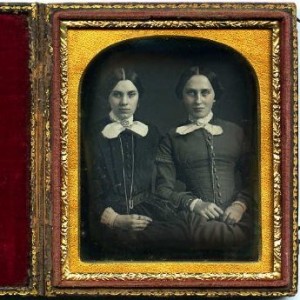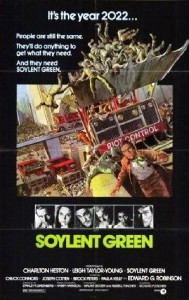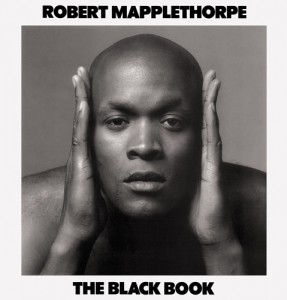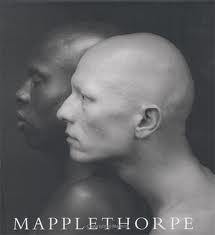Let me reiterate the distinguishing features of the primary trope under consideration in this series of posts. These “well-made photographs” repeat the same elementary formal structure:
- The primary subject (there’s rarely a secondary subject) receives central placement within the frame.
- The primary subject is the largest object within the frame.
- The primary subject is addressed frontally and head-on.
- The primary subject is closest to the picture plane within the frame.
- The primary subject is in sharpest focus.
- The primary subject contains the most intense highlights (in a b&w image) or the most intense colors, sometimes both.
- This literal subject matter and image format then get repeated until enough variants accumulate to constitute a book, an exhibition, or some even larger aggregate.
I do realize, let me hasten to add, that I’m hereby describing large portions of (even in some cases the entirety of) the variously celebrated bodies of work of Robert Mapplethorpe, Nadar, Andres Serrano, Hugo Erfurth, Catherine Opie, Edward Steichen, Ryan McGinley, Hill & Adamson, Edward Sherriff Curtis, Thomas Ruff, Bernd and Hilla Becher, Fabian Bachrach, Gertrude Käsebier, Rineke Dijkstra, Graciela Iturbide, August Sander, Phyllis Galembo, Irving Penn, William Wegman, Yousuf Karsh, Pierre et Gilles, Seydou Keïta, Peter Hujar, Walter Chandoha, Joyce Tenneson, Southworth & Hawes, Diane Arbus, Mário Cravo Neto, Tomoko Sawada, and countless other figures in the medium’s history — not to mention the people who made your yearbook photos from grade school through college and the person who made your most recent passport photos.
And yes, I’m contending that all these photographers and photo-based artists have repeated a single elementary, formally conservative image structure unrelentingly throughout their own working lives as picture-makers. So we now have 170 years’ worth of variants of that image stockpiled, surely a supply sufficient to satisfy the cravings of those most addicted to looking at that configuration. Nonetheless, it will outrage many when I announce that, from my perspective, these are all the same picture, and I’ve grown tired of looking at it/them.
Jes’ Grew
Notwithstanding the omnipresence of the well-made photograph (there are other recurrent formats as well) in post-secondary photo-ed programs, and the advocacy and endorsement of it by so many of my fellow professionals in the field, I don’t think anyone actually intended this to happen. Like Topsy in Uncle Tom’s Cabin, it “jes’ grew,” exemplifying what my late colleague Richard Kirstel liked to call an “osmotic conspiracy” — one that people enter into unconsciously, simply by swimming in and absorbing the same waters.
Richard also used to refer to “cryogenic imagery.” Starting back in the late ’70s, when cameras had begun to go electronic but well before the advent of digital imaging systems, he argued that, by then, photographers had established a sizable, steadily growing repertoire of archetypal images, any variation of which was recognized by all and sundry as a “good shot.” It was his theory that these images now came in the camera, cryogenically frozen. The camera user needed only to scan the field of vision until the lens came across a new instance of one of these archetypes; the frozen image would be instantly awakened from its sleep, defrosted, and registered on the negative.
I suspect he’d see digital imaging as an even more efficient way of replicating favored image structures. Richard spoke often of the problem of what he called “the tyranny of the subject” in photography; the trope under consideration here, in which all that varies is the subject matter at which the photographer pointed the lens, exemplifies that phenomenon.
The “Graduate Conveyor Belt”
As I noted in an earlier post in this series, the evolution of the BFA/MFA studio photography program runs concurrently with and closely parallels the evolution of the BFA/MFA creative writing program.
By coincidence, BBC News just published a report on a summer creative-writing program run in Paris by . . . New York University, whose undergraduate BFA photography program I discussed at length in my last post. See “The ultimate cure for writer’s block?” by Sean Coughlan, datelined July 17, 2012. Paraphrasing novelist Andrew Cowan, the University of East Anglia’s current director of creative writing, Coughlan writes, “The place of creative writing has now been established within the publishing industry, he says. Literary agents and publishers are waiting at the end of the graduate conveyor belt.”
Exactly. I couldn’t have said it better myself. And, in a different branch of the academic degree factory, the photo-ed division, an equivalent “graduate conveyor belt” feeds exiting students into the art-photography industry, where gallery owners, curators, publishers, and collectors are waiting.
Welcome to the photo-education system as Soylent Green.
A Trope Gone Viral
The unimpeachable post-secondary thesis project proposal may have had its origin in BFA and MFA studio photography programs, as I’ve argued in this series of posts, but its pernicious influence does not stop at the giant egress from the ivory tower, alas. A photo-ed version of what’s known in medicine as iatrogenic disease (an adverse condition in a patient resulting from treatment by a physician or surgeon, or resulting from a stay in a hospital), this highly infectious condition incubates during the academic indoctrination period and then gets carried into the larger world outside.
In “Arles 2012, A Failed Festival,” his report for Le Journal de la Photographie on this year’s Rencontres Internationales de la Photographie festival in the south of France, Jean-Jacques Naudet laments, “All the good little award-winning students officially on display were boring to death.” As that suggests, I’m not alone in detecting this phenomenon; the pervasiveness of this trope now manifests itself everywhere, not just in academe.
Those who resort to the trope for purposes of survival as the culmination of their academic careers as photo students, as I’ve detailed in a previous post, all too often carry its assumptions and tendencies into their work after graduation. Meanwhile, the current generation of teachers in and administrators of college-level photography programs, thoroughly indoctrinated first as students within the photo-ed system and then as faculty perpetuating it, not only promulgate this model in their classrooms and thesis-advisor roles but adopt it for their own projects as well. Thus it began by becoming self-validating, then turned self-replicating, and has now gone viral.
One Size Fits All
Forinstance, from the Meeting Place, its pay-per-view portfolio-review system, Houston Fotofest International generates a biennial group show, “Discoveries of the Meeting Place,” that exemplifies the pandemic nature of the trope. Ever since 1996, at the end of each year’s reviewing sessions, Fotofest has asked ten of the movers and shakers who did that year’s reviews to nominate their favorite among all the portfolios they saw. Two years later, selections from those portfolios constitute the “Discoveries” show at the next edition of the festival.
Consider the portfolios that made up the 2008 Fotofest “Discoveries” show, drawn from the 2006 portfolio review. Upon entering the show on the night of its premiere, I was immediately struck by the fact that 50 percent of its content hewed closely to the trope (which I’d already begun to track). These included Brian Berman’s portraits of people who engage in cosplay, attend weird subculture conventions, etc. (USA); Michelle Sank’s environmental portraits of teenagers who are caregivers in their private lives (UK); Katarina Mouratidi’s environmental portraits of women whose common bond I can’t recall (Germany); Dan Nelken’s “Till the Cows Come Home: County Fair Portraits” (USA); and Suk Kuhn Oh’s “The Text Book,” masked figures directorially staged in assorted spaces (South Korea). These are all, basically, the same picture. (“The 2008 Discoveries exhibition is enormously varied in the work presented,” Fotofest’s directors and Meeting Place coordinator claim in the accompanying text. Right.)
This ratio isn’t unique to the 2008 “Discoveries”; you’ll find approximately the same statistical distribution of the trope in the preceding and subsequent nominees for that biennial show. Nor is it specific to those who come to the Meeting Place; at Fotofest 2010 I led a small cohort of colleagues through a “find the trope” hunt through the other Fotofest-sponsored and -curated exhibitions, reducing several of them to helpless laughter by the time we’d entered the third showroom. And, as I’ve argued all along, it’s by no means restricted to Fotofest, but omnipresent internationally.
What I find remarkable is not just the repetition of these structural clichés but the susceptibility to them of colleagues I know and generally consider visually astute and capable of critical thinking. Have they all got insatiable appetites for typological, taxonomic catalogues? Can they simply not get enough of this (to me) mind-numbing visual cliché? How is it that they don’t see what I see?
Whatever the reason, their dependable endorsement of this trope effectively ensures its survival and longevity.
Aha!
A visit to my opthalmologist provided a physiological explanation of the phenomenon I’ve discussed in this series of posts — a growing resistance to, even antipathy toward, certain recurrent image structures. Apparently, close attention to something like a quarter-million fine-art photographs over the past 45 years, added to the estimated 10-15,000 images daily to which I’m casually exposed as a typical urban dweller in our hypermediated environment, has affected my visual cortex, leaving me trope-intolerant.
In effect, as the good doctor put it, I inadvertently supersized my exposure to this trope as a side effect of my professional involvement with photographs. There’s no known cure for this condition, except to restrict myself to the ocular equivalent of a gluten-free diet — an almost insurmountable challenge in our image-saturated culture. Doc Eckleburg did recommend verbal venting as a stopgap palliative, so I’ll go on writing about this development, while giving my eyes a two-month hiatus from engagement with any photo exhibitions and publications.
(For an index of links to all posts in this series, click here.)
•
This post supported by a donation from the Estate of Lyle Bongé.















No doubt a ambitious “curator” (ambitious only in the sense of their own career advancement) will soon stage an exhibition of “cryonic imagery”.
“Paraphrasing novelist Andrew Cowan, the University of East Anglia’s current director of creative writing, Coughlan writes, ‘The place of creative writing has now been established within the publishing industry, he says. Literary agents and publishers are waiting at the end of the graduate conveyor belt.’”
For some time now it’s been possible to pick up a novel and know not only that it was produced by a graduate of a graduate of a graduate of a creative writing program, but often which one.
“My, I’ll bet you monsters lead innnnteresting lives.” – Bugs Bunny
Mr. Coleman, I agree with you wholeheartedly about the factory-like manner in graduate programs that are spitting out cookie cutter photographers. But as an active photographer for 37 years, coming from the editorial and advertising side and now the art side, I have to disagree with some of the compositional criticisms you made, not so much that the observations are inaccurate, but in your conclusion that somehow those things are bad. There is a reason why most of these aspects seem repetitive in the vast majority of photographs, it’s how we see.
Human vision may have a wide degree of peripheral view, but in reality there’s only detail in the center point of vision, the fovea. So basically anything you chose to look at with detail is going to always be centered within your vision. And the same goes for focus. Your eyes automatically focus on the point that is the subject of your view. As you look at your computer screen, it is the screen that is centered, focused and holds the most detail. The objects on your desk may appear in your periphery but they do not have focus and detail until you chose to make them the subject of your vision. By centering them.
As you state and with my comments in brackets:
“The primary subject (there’s rarely a secondary subject) receives central placement within the frame.” {that is how your eyes work. Try focusing on something that is not centered in your vision, you can’t}
“The primary subject is the largest object within the frame.” { Is it big because it’s the primary subject, or is it assumed that it’s the primary subject because it’s big?}
“The primary subject is addressed frontally and head-on”. {I don’t think this is quite the hard and fast rule, but for a lot of dead pan portrait work it is, hence my belief that a great many of those images resemble DMV pics or mug shots}
“The primary subject is closest to the picture plane within the frame.” {I am assuming that what he means here is that the subject is most often closest to the camera, what is the alternative? Throwing a bunch of objects in between just to not make it like this? But then those objects might get perceived as having more importance than they do}
“The primary subject is in sharpest focus.” {again this is how our eyes work, it is also how it is communicated to people that in this photograph, THIS is the subject. And it does that because inherently from our own visual perception, that the subject we look at is always in focus}
“The primary subject contains the most intense highlights (in a b&w image) or the most intense colors, sometimes both.” {This may merely be a means to create depth, communicate mood, elicit detail in the subject, provide dimension and delineate form in the subject}
And again, you perceive what you think is the primary subject because of visual cues, that is a visual language that we all understand.
What you point out may seem cliché to you, but that is how vision works, that is how we all actually see the world. It is not senseless or lazy to use what we know about vision to produce images that communicate what we are trying to communicate. It is the common visual language.
Now I do agree with you that there seems to be a lot of compositional sameness in the world of photography. But that sameness is the commonality of the language.
From my perspective is that today the image is no longer the point of the photo, it is merely the excuse for the dialogue. Further what appears on the image today has little value because again, it is the conversation that seems to enthrall the art academia, a group of people whose purpose is to talk about art but most often never produce any of consequence or even quantity.
In the past photography was a profession, it required years of study just to be able to enable someone to consistently transfer the image before them onto film and print. Now it is automated and fool proof and in the past the people who taught photography, and art for that matter, were not academics but full time practitioners. To them what mattered was what appeared in the image, and that the image conveyed the meaning or story, not an external explanation, but today it’s academics who teach art and set the standards as well as the philosophy, and their preference is to talk about art rather than produce it.
And to me that is why the work today is so often visually boring. But to someone looking to project their own perspectives or assumptions on a photograph, this banal work done in mundane fashion opens up all sorts of possibilities, but alas to the general public it’s too often the Emperor’s New Clothes.
I appreciate your thoughtful response. And I don’t disagree with your basic premise that so many photographs use central placement, proximity to the picture plane, etc., because “it’s how we see.” In short, it’s a visual habit, derived from the function of the fovea in binocularly sighted primates.
Since it is, as you assert, a habitual way of seeing, a photographer can’t possibly “challenge our habitual way of seeing” by employing this trope, which in fact confirms our habitual way of seeing. Yet that claim of “challenging our habitual way of seeing” is made regularly for bodies of work that reiterate this trope.
You ask “what is the alternative” to placing the main subject closest to the camera. A surprising question from a photographer with 37 years’ experience, since the obvious answer is placing it in the middle ground or in the distance. Similarly, the main subject can be placed to either side of the frame, or at the top or bottom of it, or in any of the corners; central placement of the main subject is not mandatory in order for a viewer to read the image.
Nor does the primary subject have to be in sharpest focus. This is why God, in Her infinite wisdom, gave us selective depth of field on all but our point-and-shoot cameras. And the function of highlights is to attract the eye, drawn automatically to the area(s) of greatest illumination in the visual field and in a photographic image.
Fact is, there are countless fine photographs — by Robert Frank, William Klein, Lee Friedlander, Garry Winogrand, Ralph Eugene Meatyard, Frderick Sommer, Paul Caponigro, and many more — that their makers organized otherwise, presumably because they found it as tedious to crank out variants of that trope as I find it to look at them.
Mr. Coleman, I’m not saying that because our vision or perception works in a certain way that we are therefor required to create images in that way. I was explaining your observation as to why so many images appear that way. Because we see that way creating images that way is a natural tendency, and also the easiest way to communicate the content or the significance of the elements within a scene.
In some of my own images the subject is blatantly obvious, dead centered, and in others the main subject is uncertain. personally I choose what I feel works for the scene.
So I would not choose to criticize those aspects of imagery but the other far more cliche practices. To me things such as the dead pan portrait or the intentionally mundane capture of a banal scene are far worse perpetrators than someone having the main subject in focus or prominent within the scene.
One can argue that compositional choices, which is really what you are describing on one hand, is different than the subject matter choices that are influenced by the post graduate art Academies. Composition is almost always determined by the environment of the scene, unless of course you are making a contrived photograph. That is that the scene itself determines the composition because there are often obvious elements that need to be included in the scene in order for it to make sense or describe itself and these are elements that can not be moved our altered and a change of perspective might not be able to include them all.
Where I strongly agree with you is in the way the academia, while espousing creative freedom are in fact creating a narrowly defined area of what is acceptable in a photograph. To me the emphasis has been solely on the narrative or “concept”. While both sound like sensible paths to put students on, the problem is that the concepts range from being often vague to esoteric to cliche. And worse, the execution does not explain or communicate the concept because execution has become devalued, or at least the ability for a photograph to speak for itself.
The worst victim of this is beauty. Beauty has a bad rap now. If a work has beauty it is considered merely decoration or some other trifle. But for those who know how to use it, beauty has power. People are fascinated and even obsessed by beauty.
I think the problem is that it’s very hard to consistently create beauty and very easy to create concepts. I’ve sat in many an advertising or editorial brain storming session and can tell you that concepts are a dime a dozen. EVERYTHING has a concept. I’ve produced tens of thousands of editorial and advertising images, and all of them had a concept. The real trick, is having a concept of real merit, of insight, wit, brilliant observation and then having the ability to execute that image in a way that readily communicates the concept and also does so while captivating the eye. And you don’t learn how to do that by talking about photographs, you learn to do it by producing many, many photographs. But again, today, execution does not seem to matter, it’s gets dismissed as just being technical and true artists today are not supposed to be technical, they’re presumed to be above such things. What appears in the images doesn’t even matter that much, what seems to matter today in photography is the story and intent behind the image, even if neither appear in the print. And I think that is the direct result of the over intellectualizing and “academicizing” of photography.
Compositional choices are by definition different from choices of subject matter. The specific visual trope I’m describing at length fits all subject matter to the Procrustean bed of a single compositional structure, as I think I’ve made abundantly clear.
You write, “Composition is almost always determined by the environment of the scene, unless of course you are making a contrived photograph. That is that the scene itself determines the composition because there are often obvious elements that need to be included in the scene in order for it to make sense or describe itself.” I have absolutely no idea what you mean by this. I know of no way in which “the scene itself” can “determine the composition” or “describe itself.” A “scene” — by which I assume we both mean whatever stuff, animate and/or inanimate, lies in front of the lens at any given moment — has no ability to make determining choices or self-describe.
Every scene contains the potential for a multitude of compositional choices, and a multitude of descriptions. The photographer determines the composition; the photographer describes the scene.
While it’s obvious that the photographer determines composition and describes the scene, if you really know what you’re doing, or have a very sophisticated eye and experience, you know it is what the scene gives you. This is an intuitive thing and is not easily explained to people unless they have been there.
Clearly any scene can be captured in a million ways, but when it comes to the way that communicates the moment, the environment, the feeling, even the smell, you’ll find that the choices have been greatly narrowed. And if you want to throw in beauty or pleasing aesthetics, you’ll find the choices narrow further. And then of course on top of that are your own aesthetic sensibilities, to further narrow it all, but they can often play a smaller part than people think.
It’s hard to describe the process, but for those of us who do landscape full time, there’s a surprising commonality to the angle chosen to capture a certain scene and you’ll find often that photographers completely unaware of the work of others will also capture the scene from that same perspective time and time again.
When I first started shooting landscape I was still somewhat under the influence of Ansel Adams, and as often happens with newbies, went to many of the locations that he had photographed. What I discovered is that he had consistently found the best spots to capture the scene from. And this is while I am desperately trying to find a perspective different from his so that I could capture the scene in a more original way. But in most cases I really couldn’t find a better choice. They were different, but not as good.
I know that you are very knowledgeable about photography and have a vast visual reference library, but unless you produce a lot of photography over a long period of time, and have to make those countless compositional choices for yourself, some of what I’m saying about the scene determining the composition just won’t make sense to you. Sometimes the elements and atmosphere of a scene leave you little choice but to shoot it a certain way.
And while there’s a great deal of subjectivity to the aesthetics of composition and design, there is far more objectivity than people think. I know this from my advertising photography background. You can induce emotions and reactions in people quite deliberately and consciously and the fact that you can consistently influence the viewer means that there is a common objectivity to it.
There is a science trying to understand this commonality or objectiveness when it comes to aesthetics, its called neuroaesthetics.
Since making two-dimensional pictorial descriptions of landscapes is necessarily a cultural rather than a natural activity, it follows logically that such depictions reveal cultural tendencies rather than some externally “objective” best way to render a particular vista.
By the time anyone picks up a camera to make a landscape photograph, he or she has been subjected for years to some 15,000 images daily, a good number of them landscapes. Cumulatively, this barrage of landscape images demonstrates the dominant ways in which members of our lens culture — photographers and viewers alike — have become accustomed to seeing landscapes rendered. That most photographers will mimic this established repertoire by making “cryogenic images,” and that most viewers will approve those variants of image archetypes bearing the cultural stamp of approval, should come as no surprise.
Your suggestion that, in effect, Ansel Adams used up all the best vantage points in his landscape photography, so that anyone else who visits those sites has to settle for second best, will amuse many photographers, I suspect.
Hokusai’s “Thirty-six Views of Mount Fuji” proposes by example that there is no one best vantage point from which to view even an iconic landscape feature. Pity that more photographers don’t treat him as a model.
Mr. Coleman, when it comes to landscape there are far more limitations on capturing a specific thing than one can determine merely by looking at a photograph instead of having been there.
As an example you can’t tell from the print that the photographer’s vantage point might have been from a cliff or some other vantage point with limited mobility. You can’t tell from the print that 5 feet to the left or right distracting elements might have come into view, or the image itself might be completely obscured by trees. The only thing you know from looking at the scene is the final choice, and it may have been the only possible choice.
In my own portfolio there are scenes that only had one ideal vantage point, a good example being an image called “Lone Pine Peak”. it is an image with 5 compositional layers all in a very precise alignment.
The first layer is a fence, with a bit of road in front of it. The far left and far right fence posts are almost perfectly equidistant from the right and left crop lines.
The second layer is a row of white leafless trees, with some small black bushes almost perfectly centered.
The third layer is a row of jagged black hills, The second rise on the left following the shape of the tallest tree which is tucked perfectly into that hill. The shaded area below the second trough on the left kissing the top of a tree.
The fourth row, Lone Pine Peak itself, Dead center horizontally with the hills of row 3 descending below it to expose more of it. On the far left the rising slope of the mountains paralleling the first and second hills of the third row.
And finally the fifth row, Mt Whitney the tallest peak in the 48 states, peeking out form the lowest point of the fourth row and aligned with the lowest point of the third row.
A few feet right and the tall tree would have broken the black hills and the tops of it would be breaking the edge, not enough to be interesting, but enough to be a distraction.
To move forward and back would have affected all of the relationships between the layers. You move closer and the fence becomes more prominent, the trees taller and less of Mt Whitney would show.
You move back and the trees would start growing out of the fence and would also become shorter and less prominent.
Any movement left or right and the equal distancing of the side posts would be unequal, and the black bushes in the middle would be just off center. Small imperfections in a composition, such as a slightly off level horizon, or a slightly off center element are far more disturbing to people than obvious moves. It’s like a picture hanging crooked on a wall. It bothers people, some to the extent where they feel compelled to straighten it.
A lot of thought went into this composition. Could it have been shot differently? Of course. But you’d never get it this well composed with 5 layers from a different angle.
On the other hand I have in my portfolio about 5 images shot from pretty much the same general location in Death Valley, and they all look vastly different. You take what the scene gives you to work with, and what it gives you determines the composition.
It’s interesting that you used Hokusai, the great wood block artists as an example, he did not have to work from reality with a camera. The scene did not need to exist exactly in the way it was rendered. His work is not photo realistic or even reliant on reality. Photography requires that the scene exist in reality, unless of course you plan to collage or photo compose. And that means that you have real life limitations in camera angle and perspective.
I know you have viewed a million landscape scenes, but have you ever gone out on a serious landscape shoot and had to deal with the limitations of reality?
As I’m a working critic, not a working photographer, I haven’t “ever gone out on a serious landscape shoot and had to deal with the limitations of reality.”
As a working writer, however, I do pay close attention to language. So when you say “In my own portfolio there are scenes that only had one ideal vantage point,” I presume that you mean to say “In my own portfolio there are scenes that only had one ideal vantage point for my purposes,” and that you’re prepared to acknowledge that other landscape photographers might have other visions of the same vista. How else to explain the fact that Linda Conner’s images of the pyramids at Giza look nothing like Kenro Izu’s?
The alternative position would be that that all landscape photographers think and see alike, and all (or all of the best) intuitively agree on the ideal framing of the scene at any given site, so that the only significant differences between their works would be one of timing — who gets to which perfect vantage point first to make the perfect image thereof, after which the rest can scratch that place off their lists. Makes landscape photography sound extremely formulaic (which, of course, so much of it is).
If you reject the Hokusai model, consider as a photographic counterpart Weston’s Point Lobos, or Kertesz’s Washington Square, or Josef Sudek’s home garden in Prague. The history of this medium teaches us that even a relatively small, confined space can offer a cornucopia of potential images to a single photographer. Turn a group of skilled photographers loose in just about any situation, whether a studio, the natural landscape, or the social landscape, and you’ll end up with a diversity of visions of the same subject matter.
This exchange has wandered very far off-topic, so I’ll make this my last response to your comments. If you want to have the last word, be my guest.
Pardon me if you mentioned this in an earlier post but I’ve also noticed that recent iterations of the trope seem almost entirely dependent on textual support for interest: These are the contents of celebrities’ refrigerators; these are Ugandan rape victims’ attorneys; this is what one dollars buys in thirty countries; and on and on.
It’s problematic because the images don’t speak for themselves. Which usually means they don’t speak to me at all.
In one of the early posts in this series I did in fact talk about both the typically sociological aspect of the trope under scrutiny and the inevitable accompaniment of substantial amounts of text, once the trope gets applied to a project. The result, as you imply, is that the images become illustrations of the project’s premise.
Ryan, that is the same problem I have with a great deal of contemporary work and I referred to it in my previous comment.
Photography has changed from “a picture is worth a thousand words” to a “picture NEEDS a thousand words”. It is not a change that I think serves the betterment of photography.
Mr. Coleman, you can have 10 people in a room and have 10 different opinions on things, I am very much in agreement with a great deal of what you say. We will have to disagree on what extent the scene directs the composition but I greatly enjoyed the discussion and the opportunity for this dialogue with you. Thank you.
You might be interested in one photographer’s shifting relationship with the making of the primary trope images you discuss. What launched me on what became my book, “Rag Theater,” was having made a straight-on shot of a girl with a twinkle in her eye sitting in a chair on the sidewalk– a salt shaker between her legs, half a hardboiled egg in her hand, the other half in her mouth. The image is very strong and exactly fits your primary trope criteria. It might sound ridiculous but, having made that one image, I decided to do a book. In the course of shooting two things happened. First, I made a number of equally strong images of the same type. Second, I became bored making them. They were something I knew I could keep doing but they weren’t enough. I recall quite self-consciously forcing myself to introduce diagonal lines into my images. The shots with diagonal lines were, at first, of single subjects as had been the straight-on shots. Some of these are strong images as well, but again, making them got old. The next step was to get away from images with any easily characterizable subject at all, by which I mean that it would be difficult to describe to someone just what the picture “is of”—you would need a lot of words and you still wouldn’t be there. I don’t turn my back on the earlier image types. Indeed, during the course of the project I continued to make them when appropriate. Today though, when I look back at the work, the later more complex images interest me most. I am reminded of a story where two 20th Century classical composers are at a concert of 19th Century music and one of them says to the other, “Let’s get out of here—too many dominant/tonic cadences.”